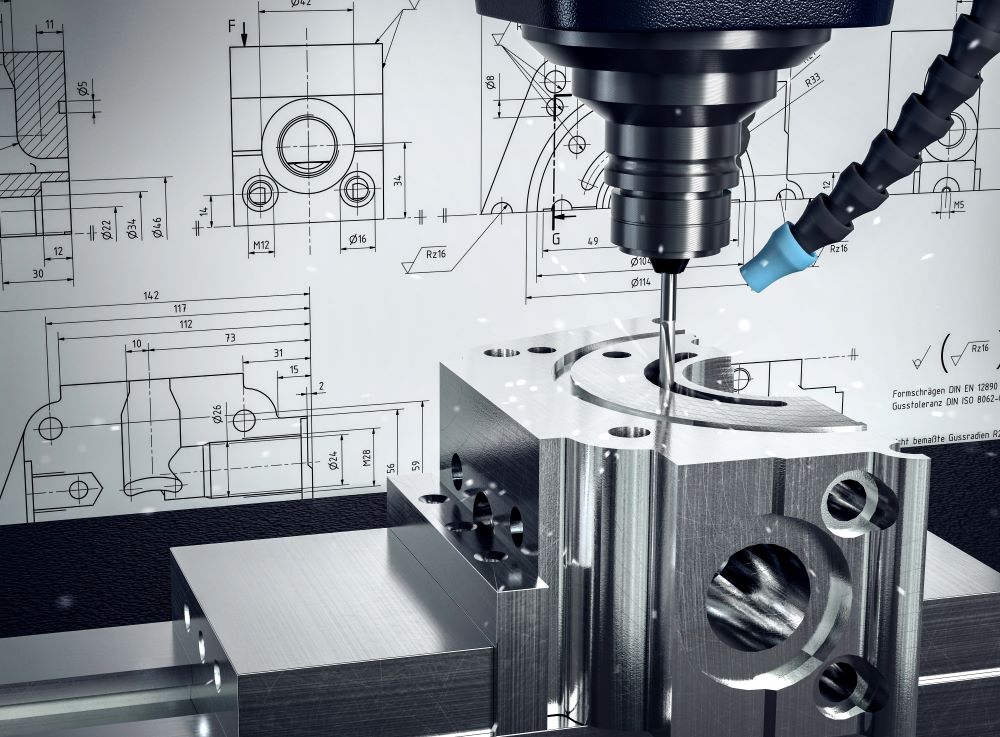Fasteners and Machining: Maximizing Layout for Superior Production
Fasteners and Machining: Maximizing Layout for Superior Production
Blog Article
Navigating the World of Fasteners and Machining: Approaches for Accuracy and Speed
In the complex world of fasteners and machining, the pursuit for accuracy and rate is a perpetual challenge that requires precise attention to detail and critical preparation. From understanding the varied variety of fastener kinds to selecting ideal products that can hold up against extensive needs, each step in the process plays a crucial role in accomplishing the desired result. Accuracy machining methods even more raise the complexity of this craft, calling for a fragile equilibrium between technological knowledge and innovative approaches. As we delve right into the techniques that can improve both rate and performance in this domain, the interplay between quality control actions and operational excellence becomes an essential prime focus.
Understanding Fastener Kind
When choosing bolts for a task, understanding the different types offered is critical for guaranteeing optimal performance and reliability. Screws are made use of with nuts to hold products together, while screws are flexible bolts that can be made use of with or without a nut, depending on the application. Washing machines are crucial for distributing the tons of the fastener and stopping damages to the material being attached.
Picking the Right Products
Comprehending the importance of picking the best materials is extremely important in making sure the optimum efficiency and reliability of the selected fastener types talked about formerly. When it pertains to fasteners and machining applications, the material option plays an important duty in identifying the overall stamina, sturdiness, deterioration resistance, and compatibility with the designated atmosphere. Different products provide differing residential properties that can dramatically influence the performance of the bolts.
Usual materials utilized for bolts consist of steel, stainless steel, light weight aluminum, brass, and titanium, each having its distinct strengths and weak points. Steel is renowned for its high toughness and resilience, making it ideal for a large range of applications. Stainless-steel offers outstanding corrosion resistance, suitable for settings vulnerable to moisture and chemicals. Light weight aluminum is light-weight and corrosion-resistant, making it appropriate for applications where weight reduction is important. Brass is commonly selected for its visual allure and excellent conductivity. Titanium is known for its outstanding strength-to-weight proportion, making it perfect for high-performance applications. Choosing the appropriate material includes considering elements such as toughness needs, ecological problems, and budget plan restraints to make sure the desired performance and longevity of the bolts.
Accuracy Machining Techniques

In addition to CNC machining, various other precision strategies like grinding, transforming, milling, and exploration play essential roles in fastener manufacturing. Grinding helps accomplish fine surface finishes and limited dimensional resistances, while turning is often used to develop round elements with specific sizes. Milling and boring procedures are necessary for forming and creating openings in fasteners, guaranteeing they meet exact specifications and feature properly.
Enhancing Speed and Performance
To optimize fastener production processes, it is important to try here enhance operations and execute effective techniques that match precision machining methods. One key method for improving speed and efficiency is the application of lean production concepts. By minimizing waste and concentrating on continuous improvement, lean methods aid get rid of bottlenecks and optimize workflow. In addition, purchasing automation technologies can substantially increase production speed. Automated systems can take care of repetitive tasks with accuracy and rate, enabling workers to concentrate on even more complicated and value-added tasks. Embracing Just-In-Time (JIT) stock monitoring can also boost efficiency by making sure that the appropriate products are readily available at the best time, decreasing excess inventory and minimizing lead times. Fostering a culture of collaboration and interaction amongst group participants can improve overall performance by promoting openness, analytic, and technology. By combining these techniques, manufacturers can attain a balance in between rate and precision, inevitably enhancing their competitive edge in the fastener market.
Top Quality Control Steps
Applying strenuous top quality control steps is vital in ensuring the reliability and uniformity of bolt products in the production procedure. Fasteners and Machining. Quality control steps encompass numerous stages, beginning from the selection of raw materials to the last evaluation of the ended up bolts. This involves assessing aspects such as product sturdiness, stamina, and useful reference composition to ensure that the bolts fulfill sector requirements.
Routine calibration of tools and equipment is critical to preserve uniformity in manufacturing and guarantee that fasteners meet the necessary resistances. Carrying out stringent methods for identifying and addressing non-conformities or issues is vital in protecting against substandard products from getting in the marketplace. By developing a thorough quality assurance structure, manufacturers can maintain the track record of their brand and supply bolts that fulfill the highest standards of performance and sturdiness.
Final Thought

In the elaborate realm of fasteners and machining, the quest for accuracy and rate is a perpetual challenge that requires precise attention to information and tactical planning. When it comes to fasteners and machining applications, the product choice plays a crucial function in establishing the overall stamina, toughness, rust resistance, and compatibility with the intended atmosphere. Accuracy machining entails numerous innovative methods that wikipedia reference guarantee the tight resistances and requirements required for fasteners.In addition to CNC machining, other precision strategies like grinding, transforming, milling, and drilling play important duties in bolt production.To maximize bolt production processes, it is necessary to improve operations and implement effective techniques that complement precision machining strategies.
Report this page